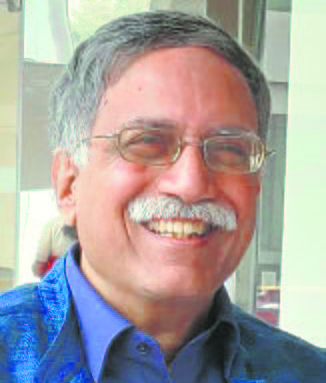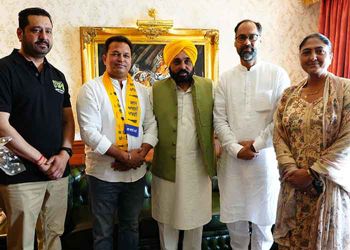
Picture for representational purpose only.
GJV Prasad
Sahitya Akademi Awards are much coveted and celebrated across the Indian languages that are in their list. This is true of Indian English as well. The first Indian English writer to receive this award was RK Narayan, and deservedly so. He received it for his novel ‘The Guide’ in 1960, five years after the awards were instituted, when he was 54 years old. I am stating his age because it has often been said that writers in other Indian languages, especially Hindi, have to wait for their dotage to receive the award, having by that time a substantial body of work.
RK Narayan already had a good body of work published by 1960 and though he may have been young by the standards of other language awardees, he was no spring chicken! This is true of the succeeding (early) awardees (by the way, the Indian English juries didn’t always find any writers suitable for the award!) — Raja Rao (1964), Verrier Elwin (1965), Bhabani Bhattacharya (1967), Niharranjan Ray (1969), Mulk Raj Anand (1971), Nirad C Chaudhuri (1975), Sarvepalli Gopal (1976), and Chaman Nahal (1977). This is also true of many of the others who followed, including Nayantara Sahgal (1986), Shashi Deshpande (1990), Esther David (2010), Temsula Ao (2013), Namita Gokhale (2021) and Neelum Saran Gour (2023). They may not have had to wait for their dotage, but these writers didn’t get the award till they had a solid body of work. Of course, there have been notable exceptions, but they are exceptions!
There are other awards for Indian English writers which are seen as more glamorous and are often bestowed early in their careers. We all know the Booker, as also the Commonwealth Prize. There are other awards as well, two specifically for women writers — the Sushila Devi Award for the best book of fiction written by a woman author, and the AutHER awards which are given across many genres. When you look at the names of the winners of the Sushila Devi Awards, you will realise that while some are well-known, and all of them deserve the award, most of them have the major part of their writing careers ahead of them. While the first award went to Namita Gokhale for her wonderful ‘Things to Leave Behind’, other winners have been Shubangi Swarup (‘Latitudes of Longing’), Avni Doshi (‘Girl in White Cotton’), Anukrti Upadhyay (‘Kintsugi’), Anuradha Roy (‘The Earthspinner’), and Janice Pariat (‘Everything the Light Touches’). You will agree that five of them are young writers, though each is a worthy winner.
This takes me to the question whether awards confer honour to writers or do writers add honour to the award? While it is a bit of both, I feel that many writers add lustre to awards. Take the case of Neelum Saran Gour, the latest winner of the Sahitya Akademi Award for English. The award-winning ‘Requiem in Raga Janki’ comes late in her career. She has a very strong body of work and could have won the award any year. However, ‘Requiem’ is a substantial work, and I am glad that it did win the award, bringing attention to the writer and the work.
It is interesting to read the book in the midst of the controversy about TM Krishna. The world of Hindustani music has always celebrated its roots in the courtesan culture as well as Sufi and Bhakti traditions. Muslims have played a major role in its development and are duly celebrated. ‘Requiem’ is a fictional biography of a Hindustani singer, Janki Bai Ilahabadi (1880-1934), during whose life record companies first came to India and took the voices of singers into households and families which would have had no access to their concerts. Thus, ‘the golden era’ of Hindustani music enriched the life of more and more people.
This is the story of how her voice took Janki Bai from penury, from an upbringing in a kotha that had no place for girls who were not conventionally good-looking, to the world of durbars and recording studios and wealth. This is a book that takes even a lay reader into Hindustani music’s intricacies and its traditions. We must read it for the world it builds for us, for the magnificent book that it is, and to salute a wonderful writer.
Join Whatsapp Channel of The Tribune for latest updates.




























